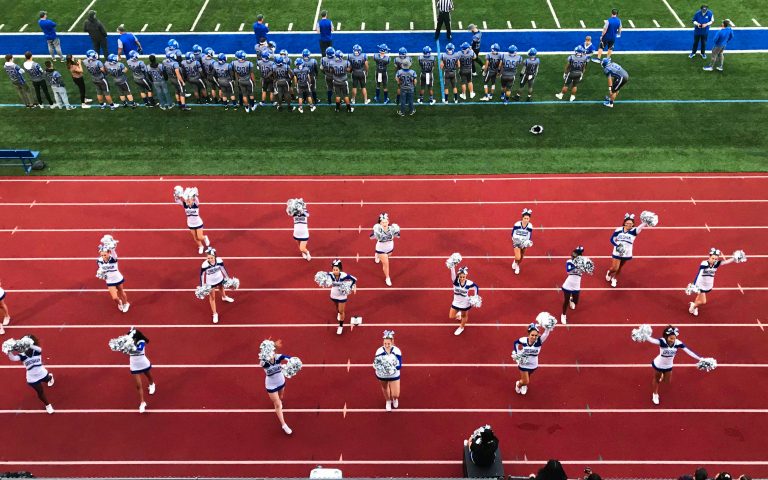How Climate Change Affects Lower-Income Communities Worse Throughout the Nation
Photo from Pexels.com.
Climate change affects all of us, whether we like it or not. No matter our background or race, climate change will impact everyone. However, those in lower-income communities will feel the wrath of climate change worse than wealthier neighborhoods. There are various ways to help those who will handle the more significant impacts of climate change, which will be elaborated upon.
In an interview with Alexander Gates, Ph.D., a Distinguished Service Professor in the Earth and Environmental Sciences Department at Rutgers University, Newark, New Jersey, USA, I discussed how climate change affects those specifically in lower-income areas. He is also the author of the textbook: Polluted Earth: The Science of the Earth’s Environment.
What exactly is climate change?
Humans are changing the climate. Climate change is defined as weather changes. Before, the weather was naturally evolving, but human action altered the environment. According to un.org, fossil fuels are the most significant contributors to global climate change, accounting for over 75 percent of global greenhouse gas emissions and nearly 90 percent of carbon dioxide emissions.
Photo from Pexels.com. Taken in Maastricht, LI, Netherlands
How climate change affects lower-income communities
Depending on the community’s location, lower-income communities can feel the effects of climate change more severely than those in wealthier neighborhoods. Storms, river flooding, and droughts disproportionately impact poor and marginalized communities.
Photo from Pexels.com.
According to the Public Policy Institute of California, “Low-income communities and people of color tend to have considerably less access to resources, such as insurance, to help them recover from floods. They often don’t have good access to emergency response information. Floods can affect their health and impose various costs they weren’t expecting. They may lose their jobs and affordable housing. They may have poor access to relief funds. Higher-income people usually end up in about the same place they were before a disaster, but lower-income people largely end up worse off. And these effects can last for years and sometimes even bring permanent losses.”
The sea levels will rise, and if there is a storm, it could cause floods, which can ruin properties and cars. According to Carbon Brief, “Around 90% of all-natural disasters in the US involve some form of flooding. Just one inch of flood water can cause as much as $25,000 in damage to a home – and between 2010-18, floods caused a total of $17bn of damage in the US.”
| Rank | Date | Event | Number of paid losses | Amount paid ($ millions) | Average paid loss |
|---|---|---|---|---|---|
| 1 | Aug. 2005 | Hurricane Katrina | 168,256 | $16,092 | $95,640 |
| 2 | Sep. 2017 | Hurricane Harvey | 78,254 | 9,171 | 117,192 |
| 3 | Oct. 2012 | Superstorm Sandy | 132,897 | 8,619 | 64,852 |
| 4 | Sep. 2008 | Hurricane Ike | 47,247 | 2,670 | 56,517 |
| 5 | Aug. 2016 | Louisiana severe storms and flooding | 27,737 | 2,536 | 91,432 |
| 6 | Sep. 2004 | Hurricane Ivan | 31,981 | 1,688 | 52,791 |
| 7 | Sep. 2021 | Hurricane Ida | 28,544 | 1,589 | 55,658 |
| 8 | Sep. 2004 | Hurricane Jeanne | 31,486 | 1,513 | 48,062 |
| 9 | Aug. 2011 | Hurricane Irene | 44,178 | 1,321 | 29,894 |
| 10 | Sep. 2017 | Hurricane Irma | 23,119 | 1,153 | 49,884 |
Source: Federal Emergency Management Agency (FEMA) National Flood Insurance Program (NFIP) data; analysis courtesy of Aon.
Alexander Gates, Ph.D., a Distinguished Service Professor in the Earth and Environmental Sciences Department at Rutgers University, Newark, New Jersey, USA
Other severe effects of climate change in lower-income communities are less access to clean water, forest fires, tornadoes, rising hurricanes, and extreme heat exposure. Those in lower-income communities cannot afford various air conditioners or fans, and the electricity from these devices will be used up. Another effect is water pollution. Alexander Gates, Earth and Environmental Sciences Professor at Rutgers University, states: “To filter out the water, the best thing to use is water filters such as Brita type filters. They can clean up water well. We don’t want to pollute more water because we need it. The next thing is we can’t waste water. Reduce usage & it’ll make more potable water for everyone. Buying water bottles is expensive. Filters are less expensive.”
How can we help lower-income communities and reduce the risk of climate change?
Alexander Gates states, “The Biggest way to help those in lower-income communities is to educate people about the effects of climate change, especially in their areas. Hence, they know what’s coming and can start planning before it gets too bad. One thing that can be done is possibly moving out or lobbying the government to improve the infrastructure so that these places won’t be that badly impacted, at least for a while.” Although this issue is undoubtedly more significant and more extensive than for the regular public to fix, it is still helpful if those who can participate contribute their part, even if it’s considered minor. People could drive smaller cars that use less gas, be mindful of their electricity usage at home, and reduce wood waste. Minor adjustments as such can have a more significant impact if many people join in to reduce the effects of climate change, significantly helping lower-income communities.




